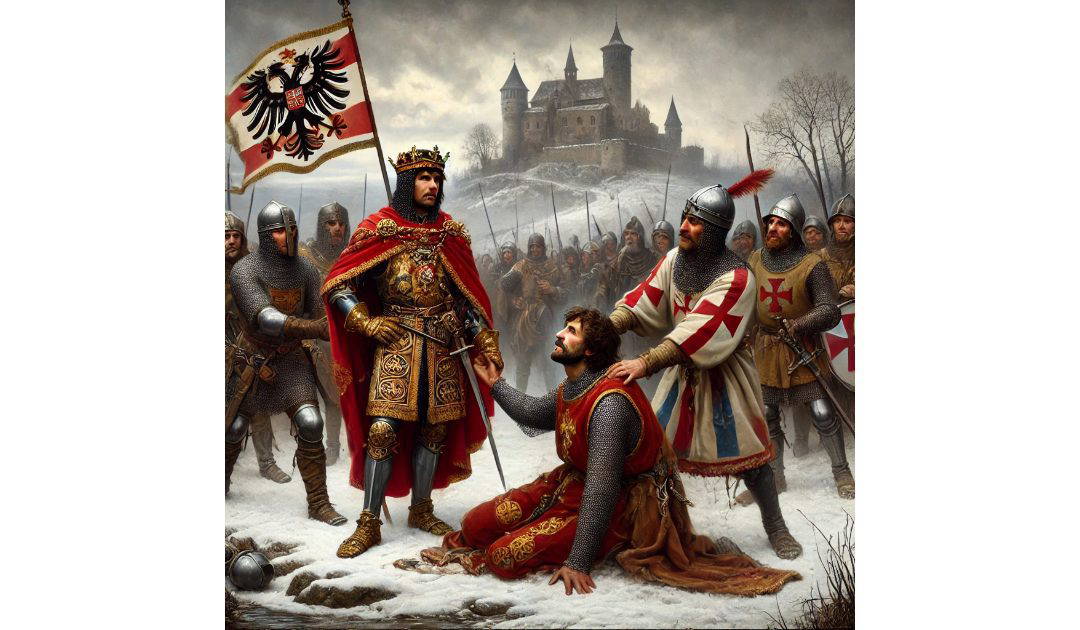On 20th December 1192 Richard I was captured near Vienna by Leopold of Austria on his return from the Third Crusade. Richard I of England, known as Richard the Lionheart (1157–1199), is one of history’s most iconic monarchs. Born to King Henry II of England and Eleanor of Aquitaine, Richard was the third son, originally not expected to inherit the throne. However, his charisma, military skill, and his brothers’ untimely deaths propelled him to the English crown in 1189. Fluent in French and Occitan, but reportedly barely speaking English, Richard spent little time in England, viewing it more as a source of revenue for his military ambitions.
Richard earned his nickname, “Lionheart,” for his bravery and military prowess, particularly during the Third Crusade (1189–1192). His leadership and valor on the battlefield cemented his reputation, especially in his battles against the Muslim leader Saladin. Despite failing to recapture Jerusalem, Richard secured a truce allowing Christian pilgrims access to the Holy City. His victories at Arsuf and Jaffa are celebrated as examples of medieval strategy and personal heroism.
On his way back from the crusade, Richard was captured near Vienna in 1192 by Duke Leopold of Austria, a former ally turned foe. Leopold handed him over to Emperor Henry VI, who held him for ransom. England paid an enormous sum for his release, draining the kingdom’s coffers. This episode reflected both Richard’s popularity and the challenges of medieval politics.
As king, Richard prioritized his crusading ambitions over domestic governance, leaving England under the administration of officials like William Longchamp and his younger brother, John (later King John). His absence and the financial strain of his campaigns left England politically unstable and heavily taxed.
Richard’s final years were spent in France, defending his territories in Aquitaine and Normandy. He died in 1199 from a wound sustained during the siege of Châlus-Chabrol, famously forgiving his assailant on his deathbed. His remains were interred at Fontevraud Abbey, alongside his parents.
Though Richard’s reign lasted a decade, his time in England totaled only about six months. Despite this, his chivalric image and crusading zeal have made him a legendary figure, embodying the medieval ideal of a warrior-king. His legacy endures in literature, folklore, and popular culture as a symbol of courage and leadership.

